Friday 16th June to Thursday 20th July 2017
The strong winds forecast for our 240nm passage from the Tuamotus to Tahiti failed to materialise and although we optimistically raised the cruising chute and drifted along at two to three knots for most of the afternoon of the second day as dusk approached we furled the sail, estimated we had just enough diesel left to get us to Tahiti and motored for the rest of the trip. As we reached the north of Tahiti during the afternoon of the third day, we passed Venus Point and the bay where Captain Cook anchored in 1769 to measure the transit of Venus across the sun (in an attempt to calculate the distance of the earth from the sun). We had intended to stop and anchor ourselves in this historic spot but the lure of the marina, waiting showers, civilisation, shopping etc proved too much and we carried on to get a berth in Tahiti’s town marina, right in the heart of Pape’ete, the capital.
We had a prime berth right on the edge of the marina, away from the traffic noise of the main boulevard and next to the park from where we could watch the people of Pape’ete exercising in their Lycra morning and evening. On our other side was a wonderful view of the next island Moorea, the docks with cargo ships coming and going, the arrival and departure of other boats, cruise ships, mega yachts, the ferries to and from Moorea, and the teams of paddlers in their outrigger canoes practicing for the Heiva canoe races.
I had a plane ticket to return home for almost three weeks and left Hugh to get those odd jobs on Vega done: polishing the railings, servicing the engine, fixing all the broken bits. He hardly had a chance to get lonely as a succession of cruising friends came and went and invited him out for drinks, meals and visits to the chandlers.
I got back to Tahiti just in time for Heiva, the festival that takes place throughout the islands of French Polynesia during July. Initially introduced in 1882 to celebrate Bastille Day, it has become a festival of Polynesian culture and ancestral tradition.
The most important event is the dance contest and we had tickets for one of the heats where teams from the different islands are judged on various aspects such as choreography, music and costumes. Teams of up to 100 dancers had been rehearsing all year for the performances which tell traditional stories with historical or legendary themes, with several costume changes. The women rotated their hips rapidly and sensuously to the pulsating beat of the drummers until their leaf bustles were a blur. The men, squatting with bent knees, did a scissor step, moving their knees in and out. It was all huge fun and the crowd had come out in force, dressed for the occasion, to support their team. They got very excited, calling out and whistling their appreciation.
In the 19th century the Christian Missionaries condemned the dancing as vulgar and debauched so it was forbidden and only practiced clandestinely. Not until 1956 was Polynesian dancing and music celebrated again legally.
Although photography was forbidden we managed a few sneaky pictures on the iPhone.
In the park by the marina the fruit carrying competition took place. Over a 2km course the competitors run barefoot carrying on their shoulders poles laden with fruit, mainly bananas, weighing from 30kg to 50kg.
Following this dancers from the Marquesas, well tattooed, with audience participation.
There are also traditional sporting events which include stone lifting (very large Polynesian men lift heavy boulders weighing up to 175kg onto their shoulders), the javelin throwing event (impale a coconut with your javelin), the copra preparing competition (another team event where the team to chop the most coconuts in half, remove the flesh and put it in a sack wins), and climbing to the top of the coconut palm fastest…… which regretfully we missed.
On Bastille Day there was also a march past of the military and public services to appropriately uplifting marching music.
Our friends Ian and Steph on Nautilus reached Tahiti after spending time in the Tuamotus just before I returned, so we hired a car with them to see around Tahiti. It is a large mountainous island, the creation of volcanic eruptions, with the road running around the narrow coastal fringe, inland are a jumble of rugged, high, green-clad mountain peaks.
We drove to Venus Point. Captain Cook would probably have difficulty recognising it… there are giant inflatable water toys in the bay, families relaxing on the black sand beach and a huge new carpark is being built right on the point. There is also a rather nice lighthouse here and memorials to HMS Bounty which dropped anchor in the bay and to the London Missionary Society who also made a stop here on their mission, which was extremely successful judging by the full attendances at church.
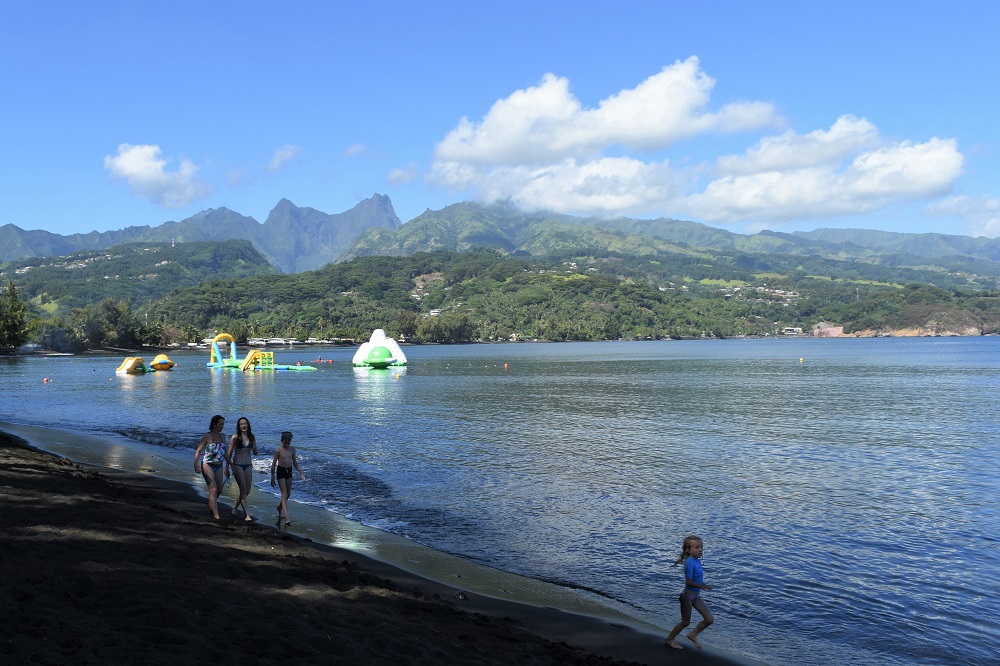
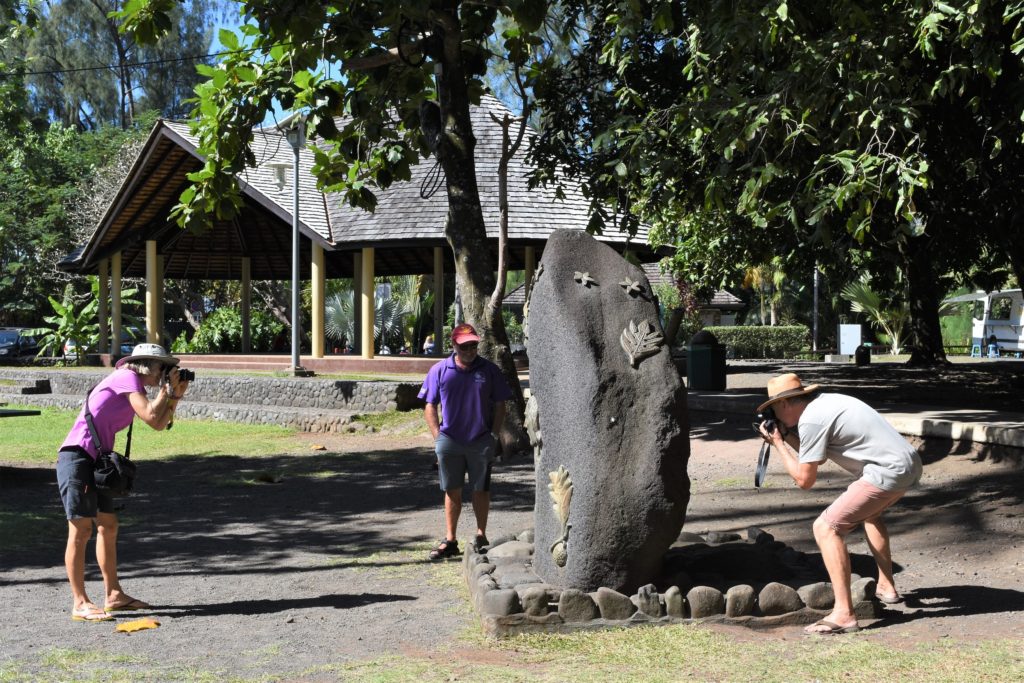
We walked to one of the waterfalls around the island. Disappointingly the Paul Gauguin museum closed a few years ago… it didn’t contain any of his original works which are mostly in international art galleries. The botanical gardens were restful but underwhelming and the pair of Galapagos giant tortoises they have there looked extremely old and decrepit.
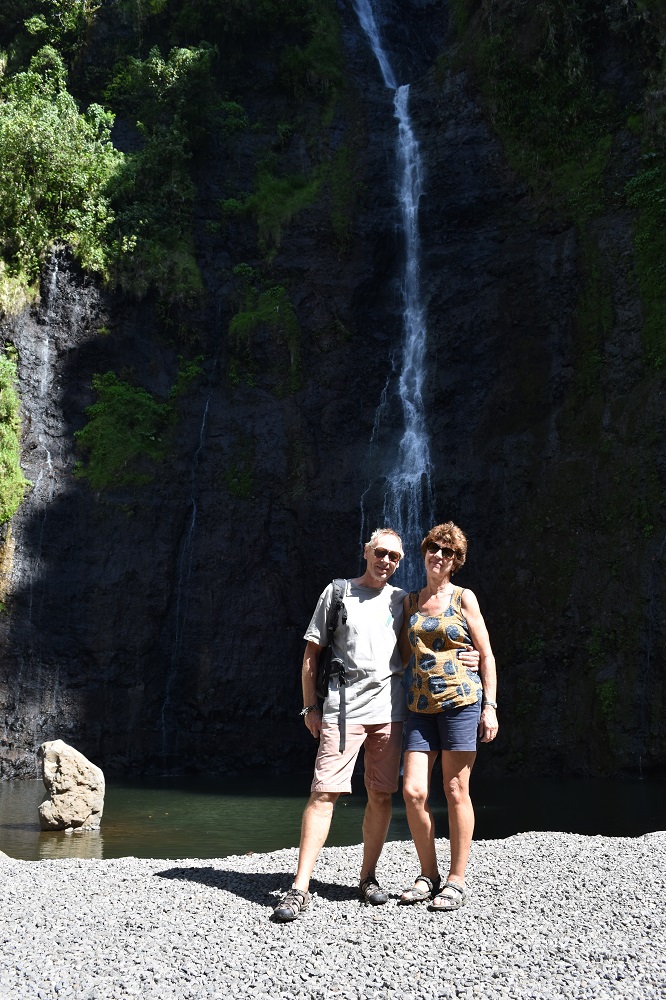
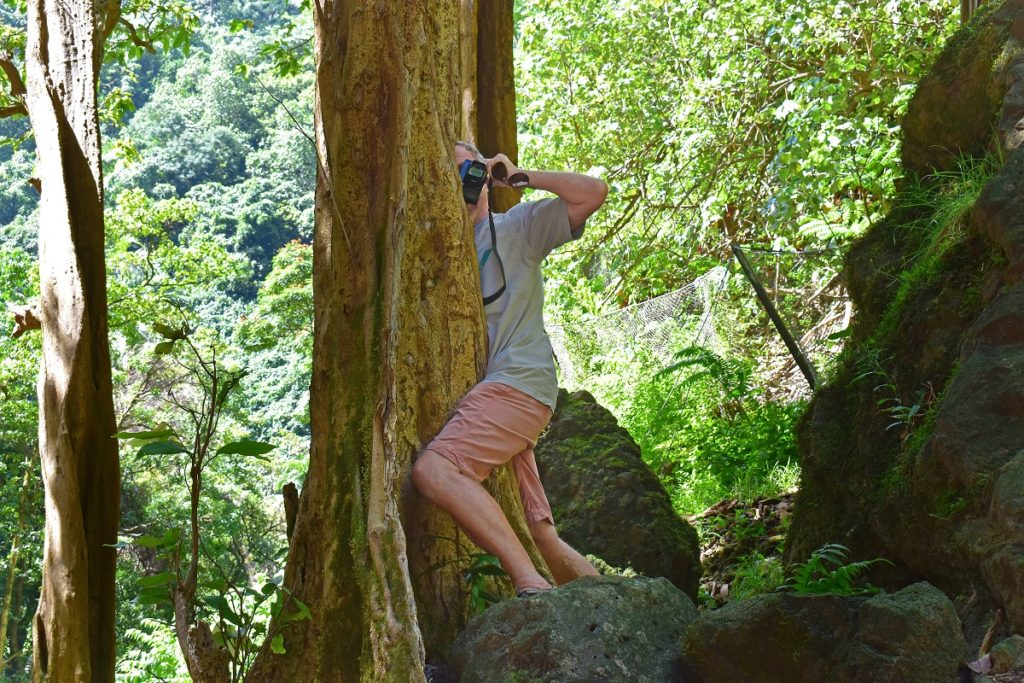
Some of the scenery was very unexpected and we wondered if we had been transported to rural England:
Papeete is a large, bustling, sprawling city and much of the old centre has been rebuilt with ugly modern shops and offices. Whilst here we visited chandlers for boat parts, got gas bottles refilled and went to the supermarket to restock .. the final bill made a Waitrose shop look amazingly good value. The covered market is the place to buy fruit and vegetables and local handicrafts as well as that all important coconut bra and grass skirt for Tahitian dancing.
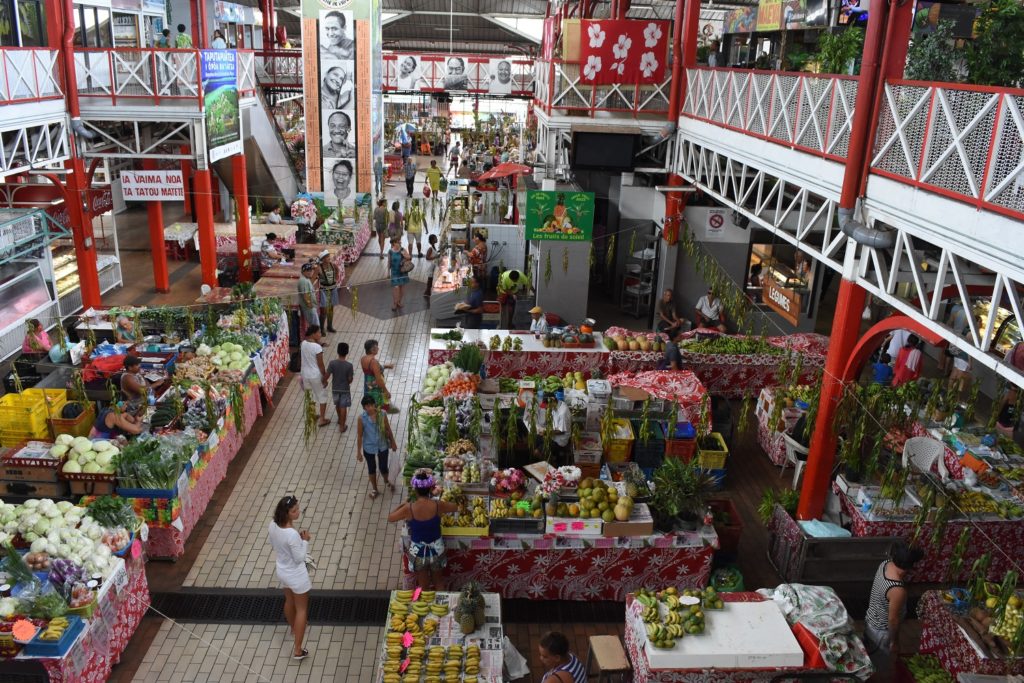
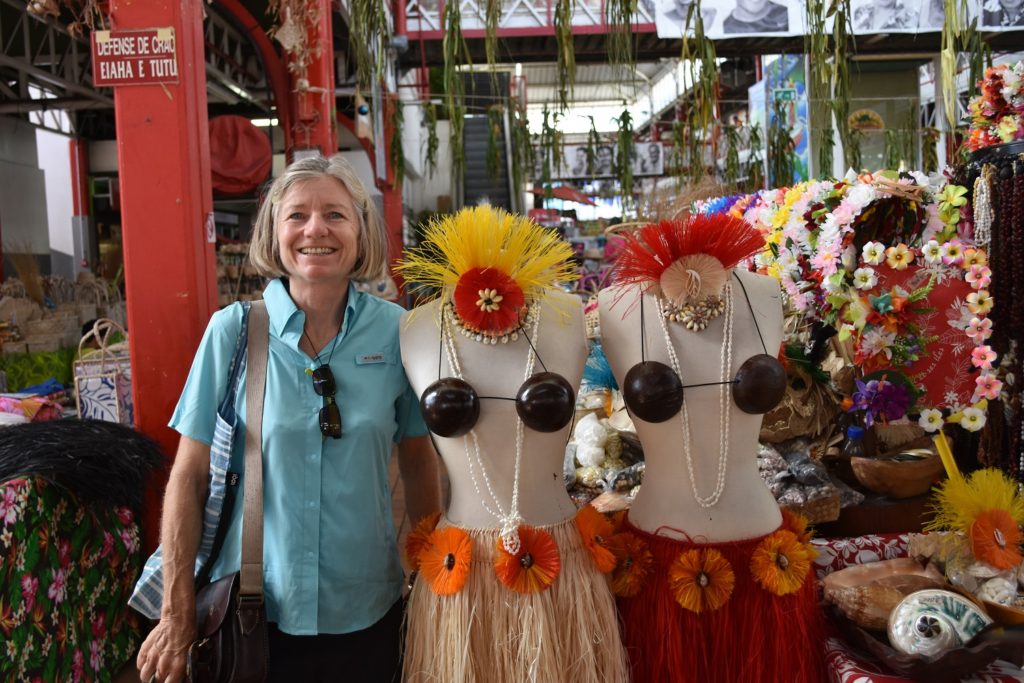
In the evenings we often ate at the Roulottes, a group of food vans on the waterfront serving a huge variety of foods from fresh fish kebabs, Chinese dishes, steak and chips to pizzas.
Everyone here is getting tattoos. The word ‘tattoo’ comes from the Tahitian word tatau and they are very beautifully done with intricate patterns of symbolic shapes representing aspects of life and the natural (and supernatural) world. A large number of men of our acquaintance are getting their arms and chests tattooed whereas the women prefer a design on their feet. I am still undecided.
We had a few more of the Society Islands to explore and it was only a 20 mile hop to the neighbouring island of Moorea….

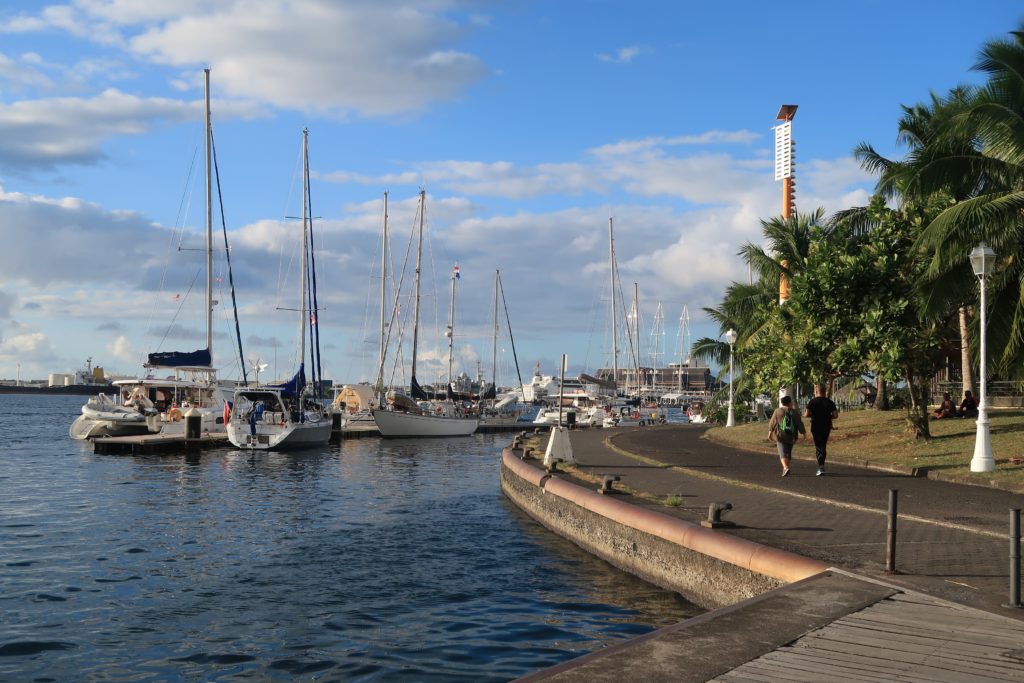
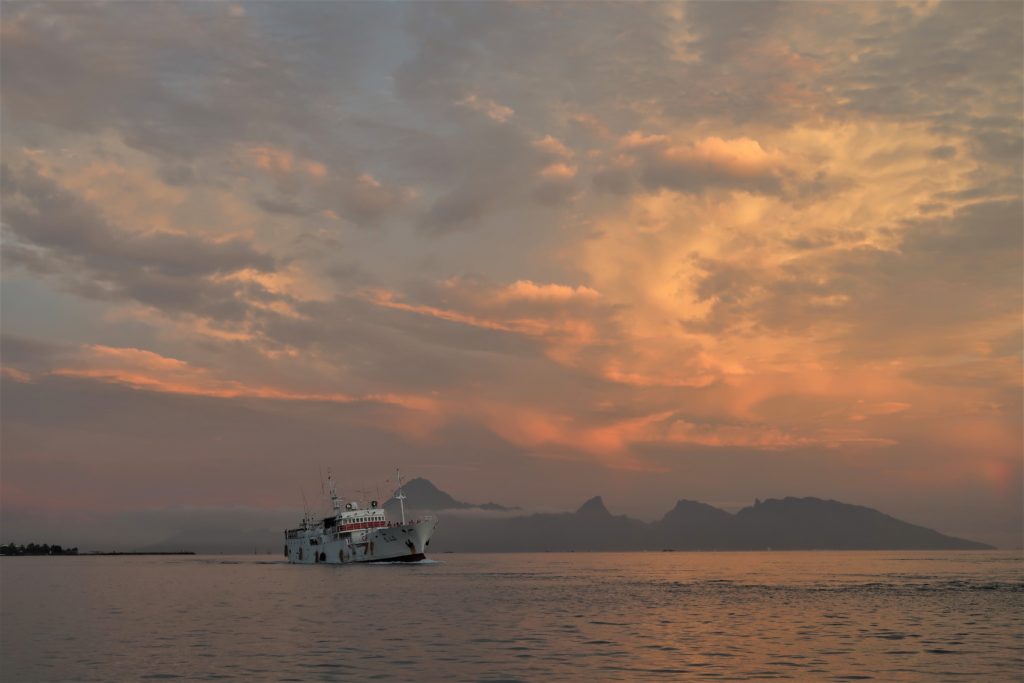
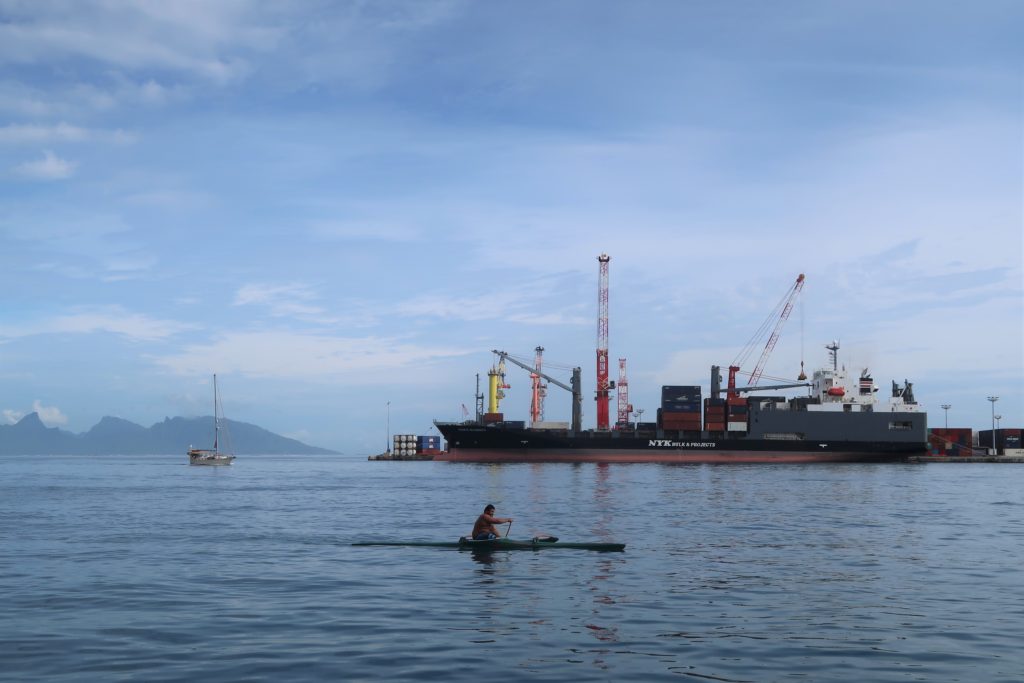
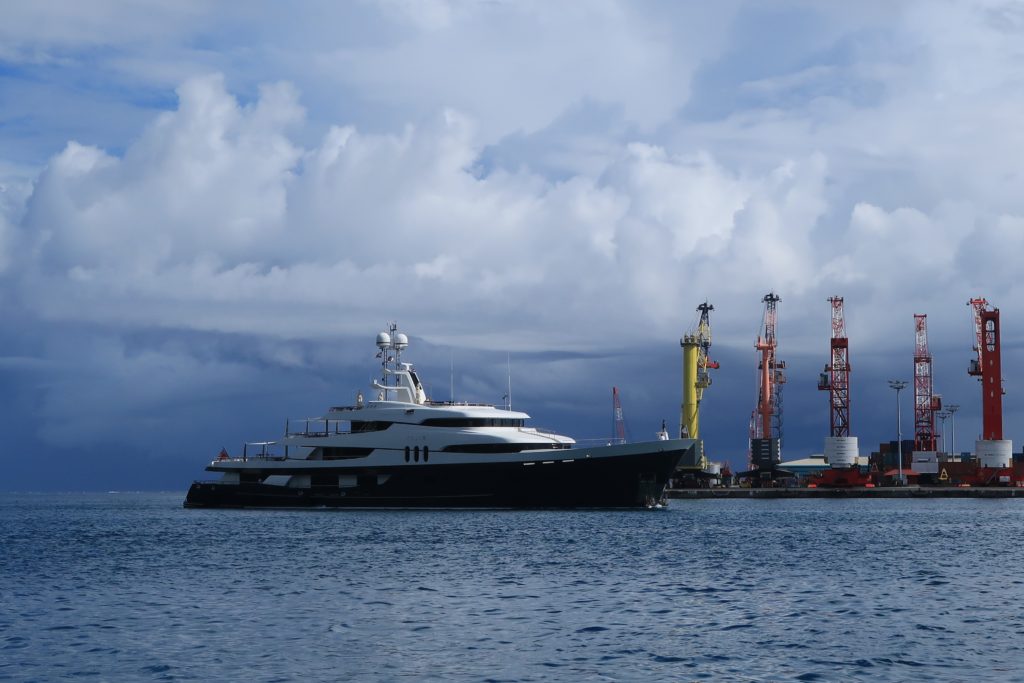
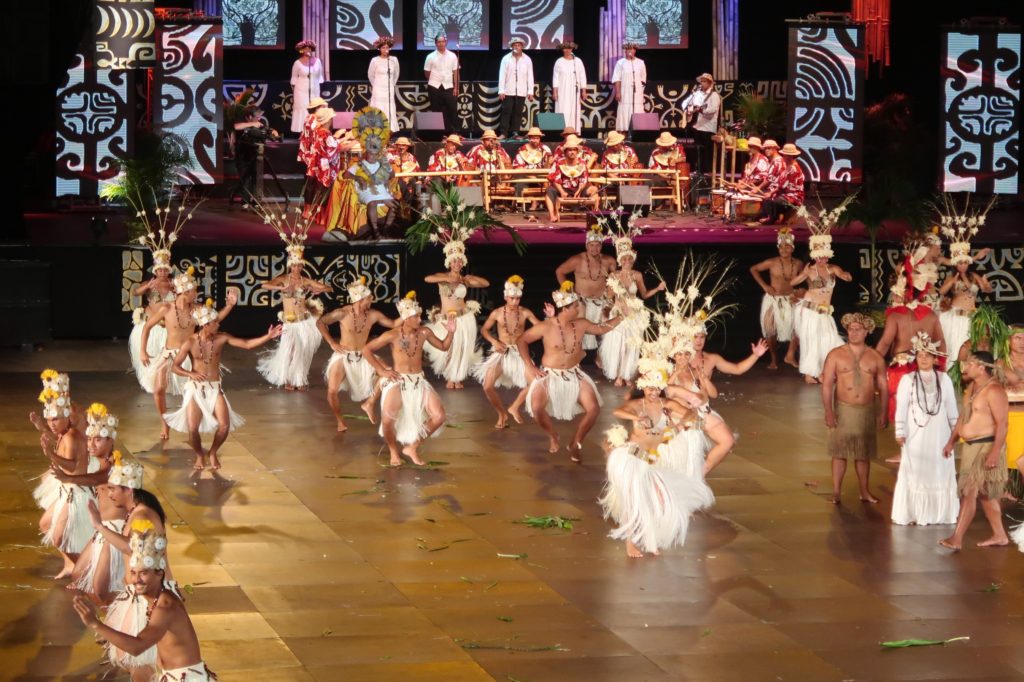
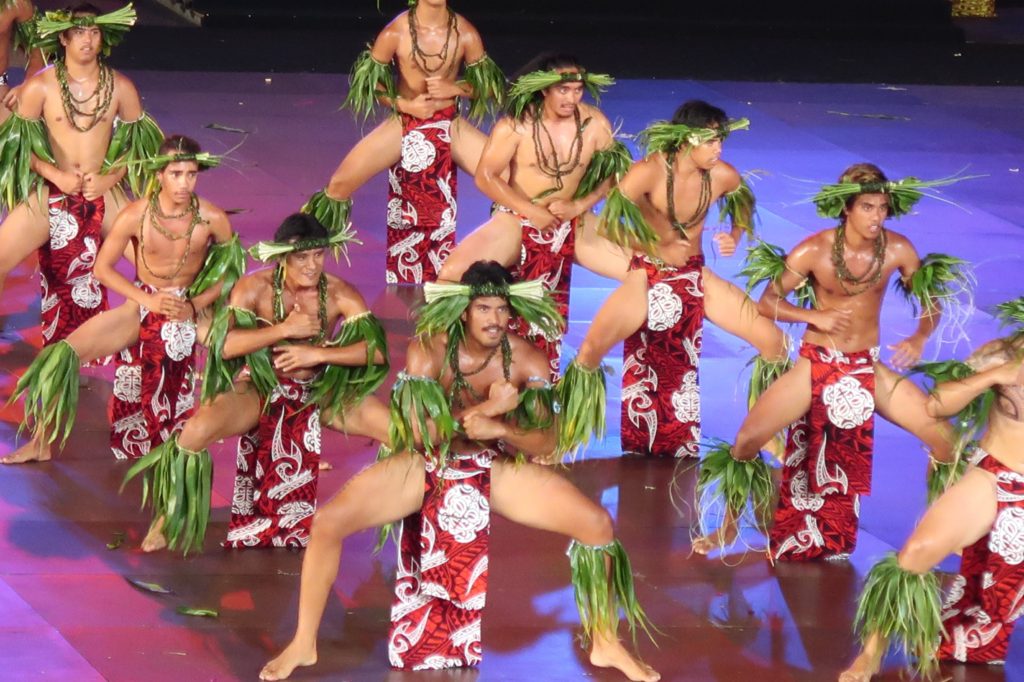
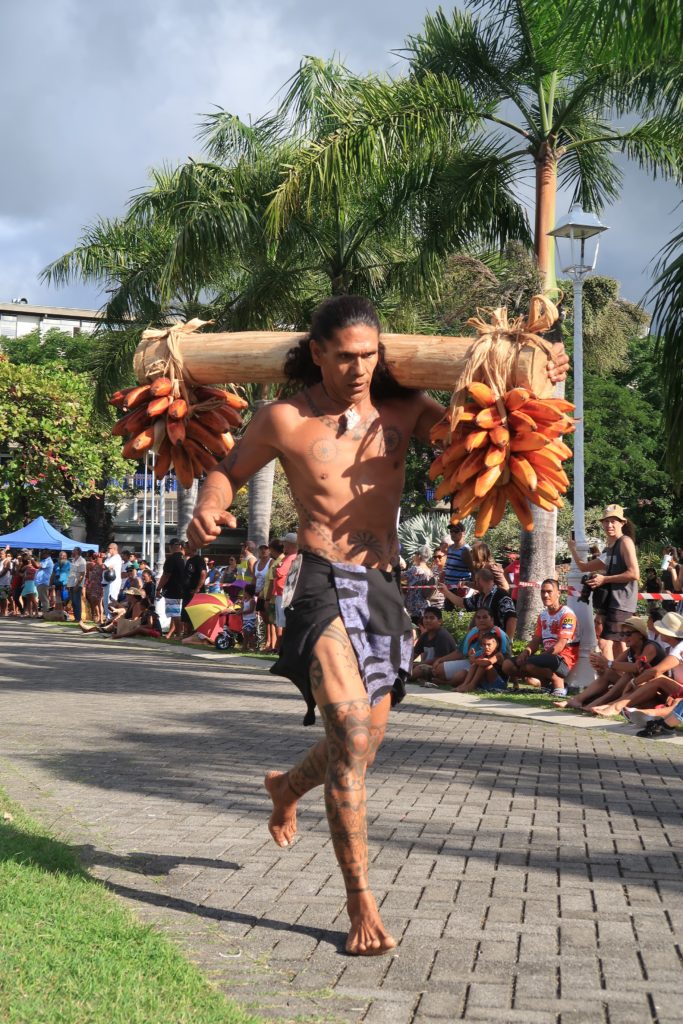
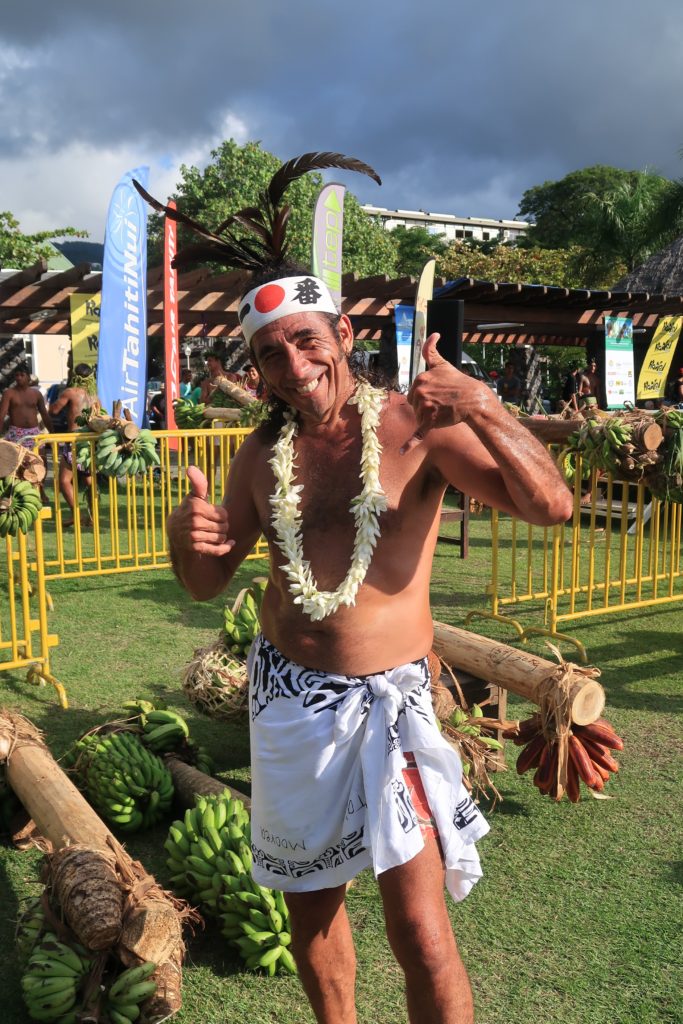
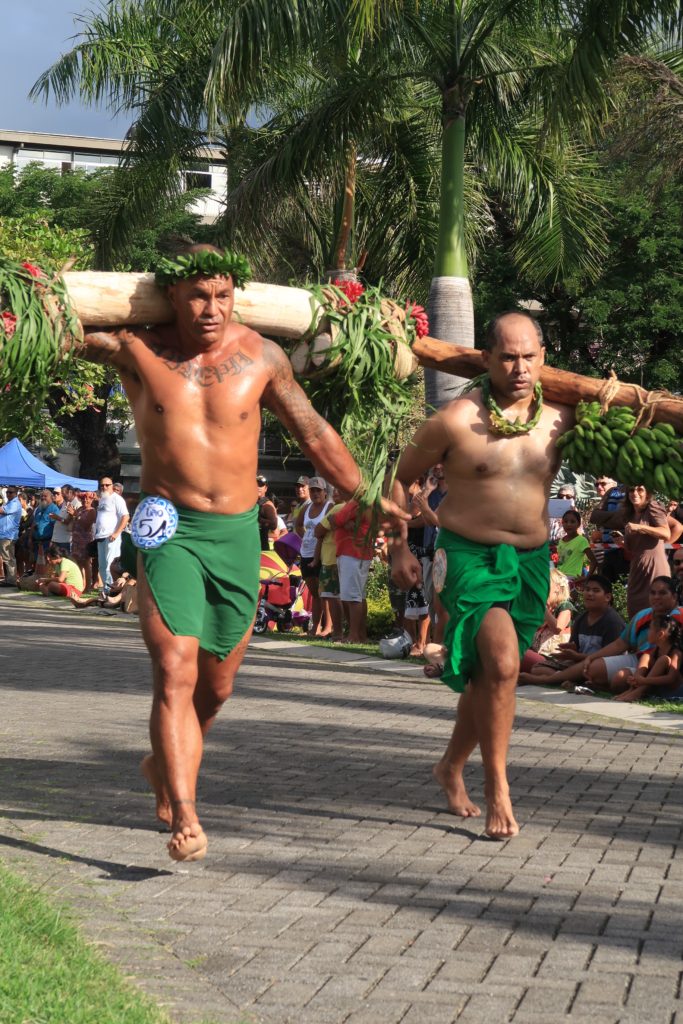
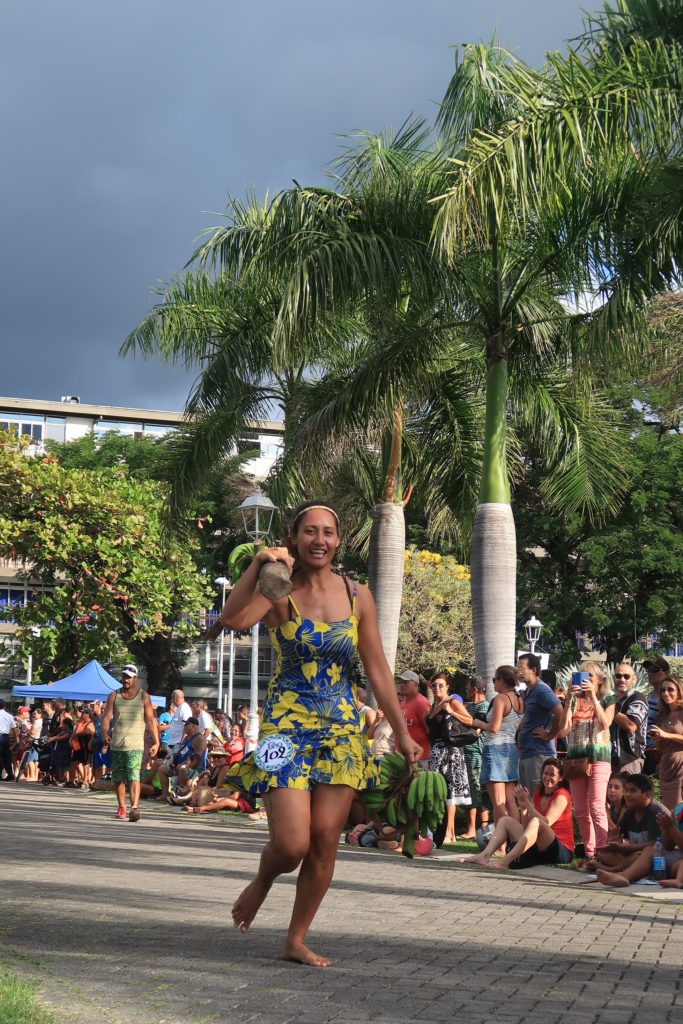
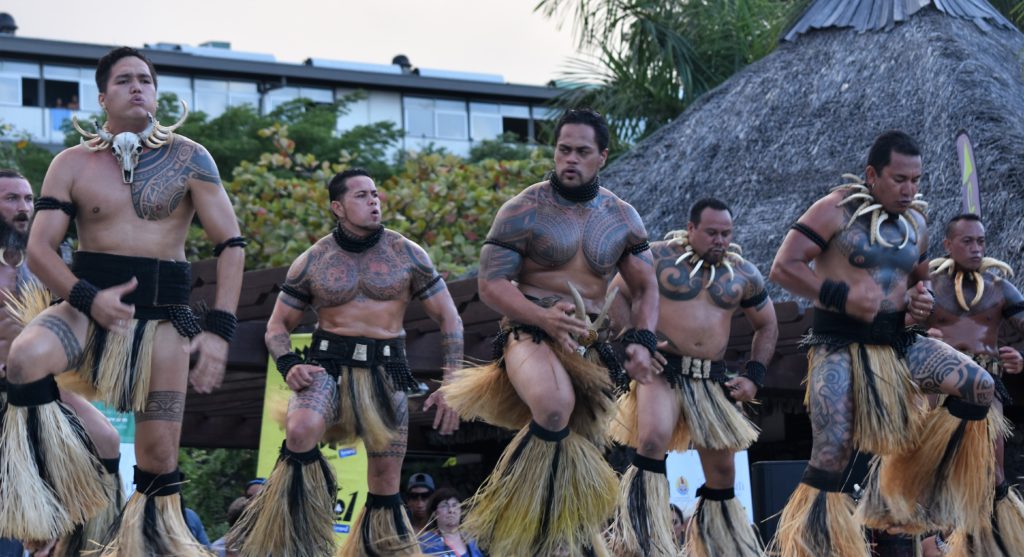
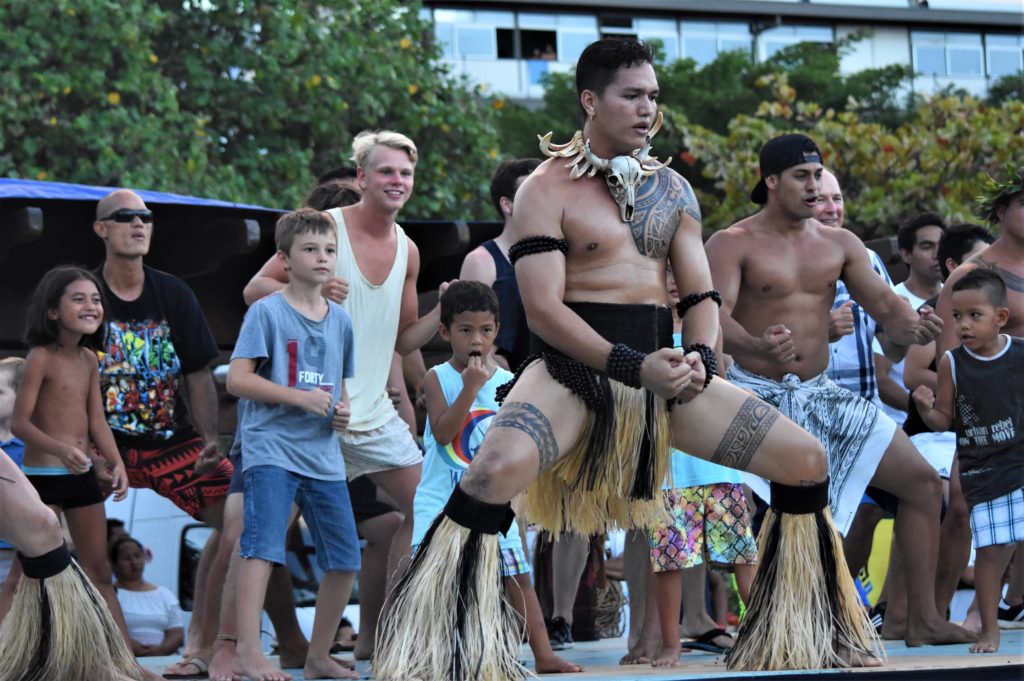
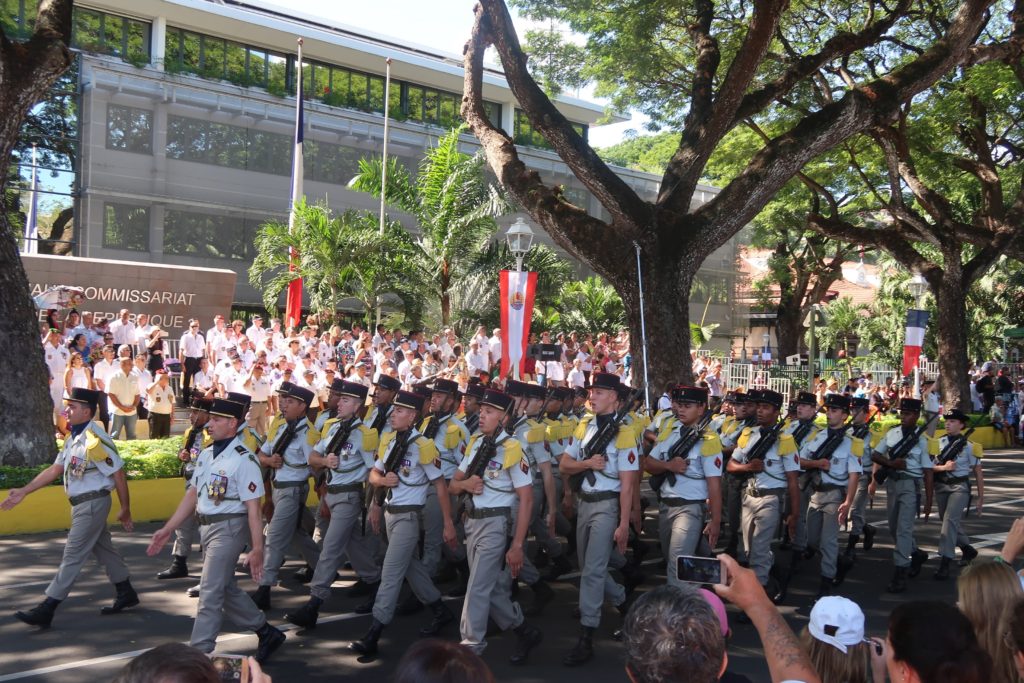
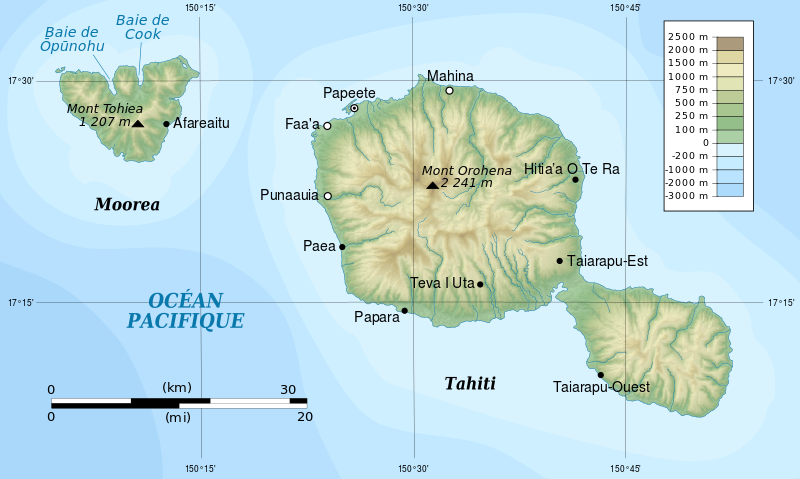
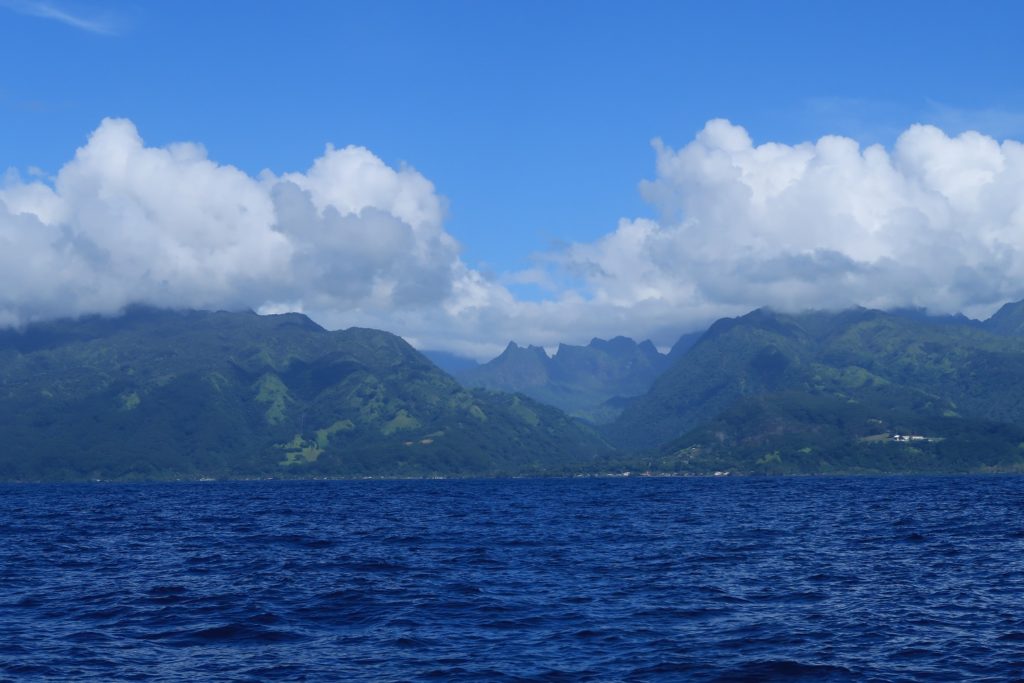
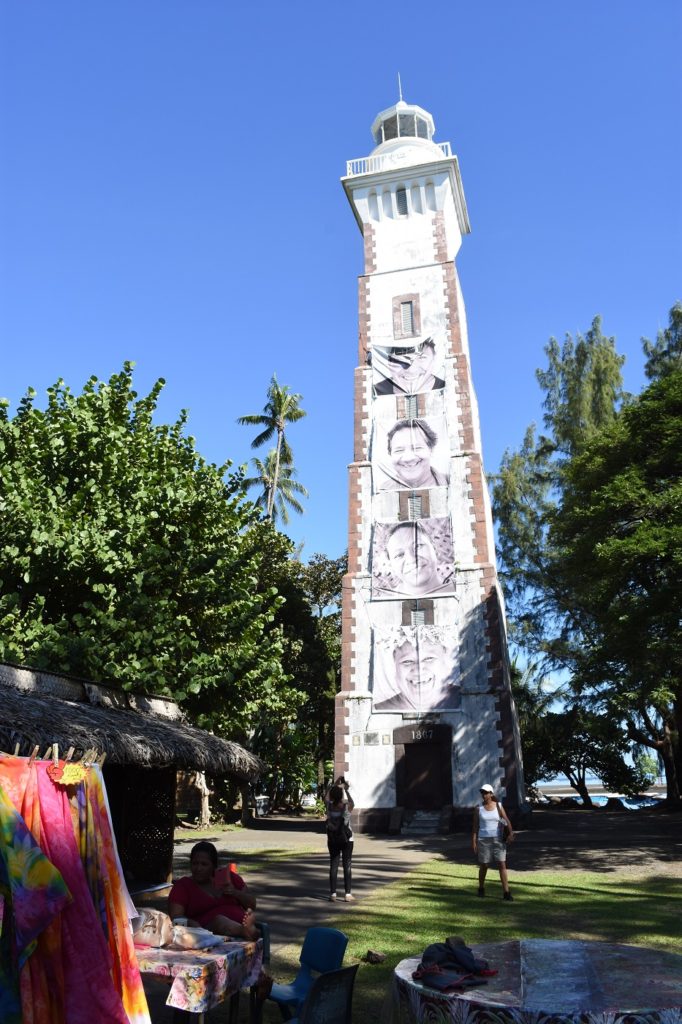
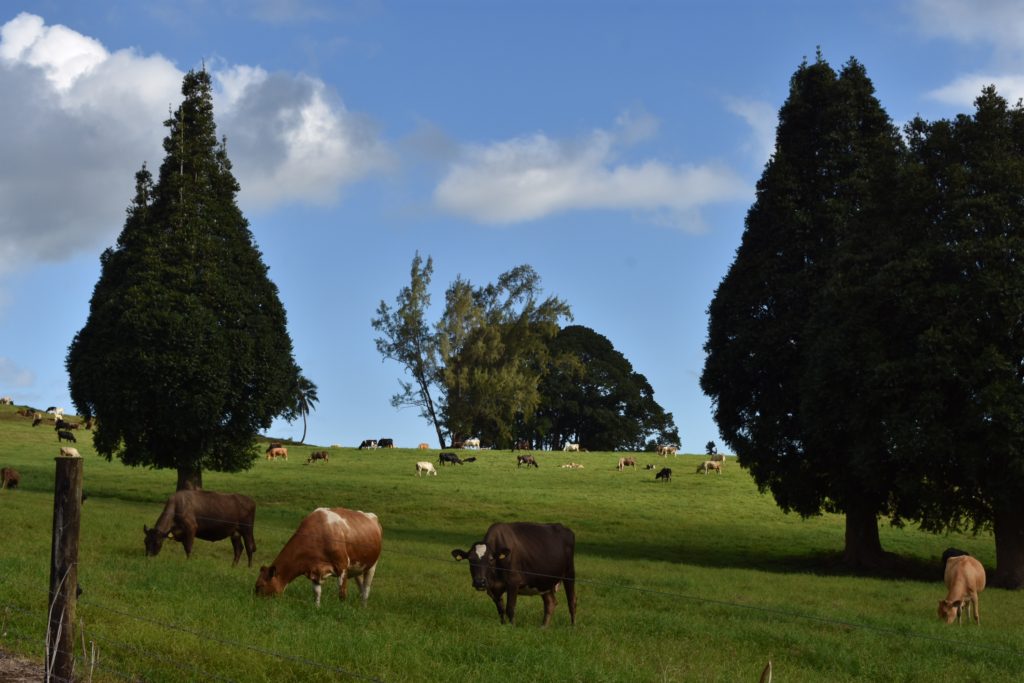
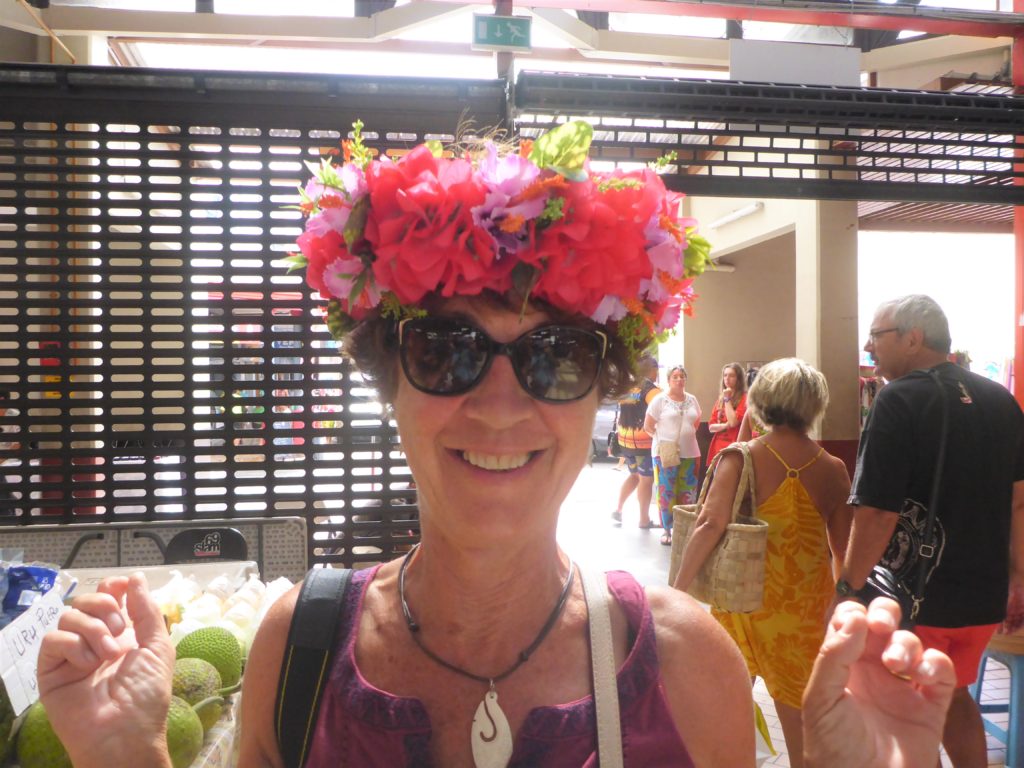
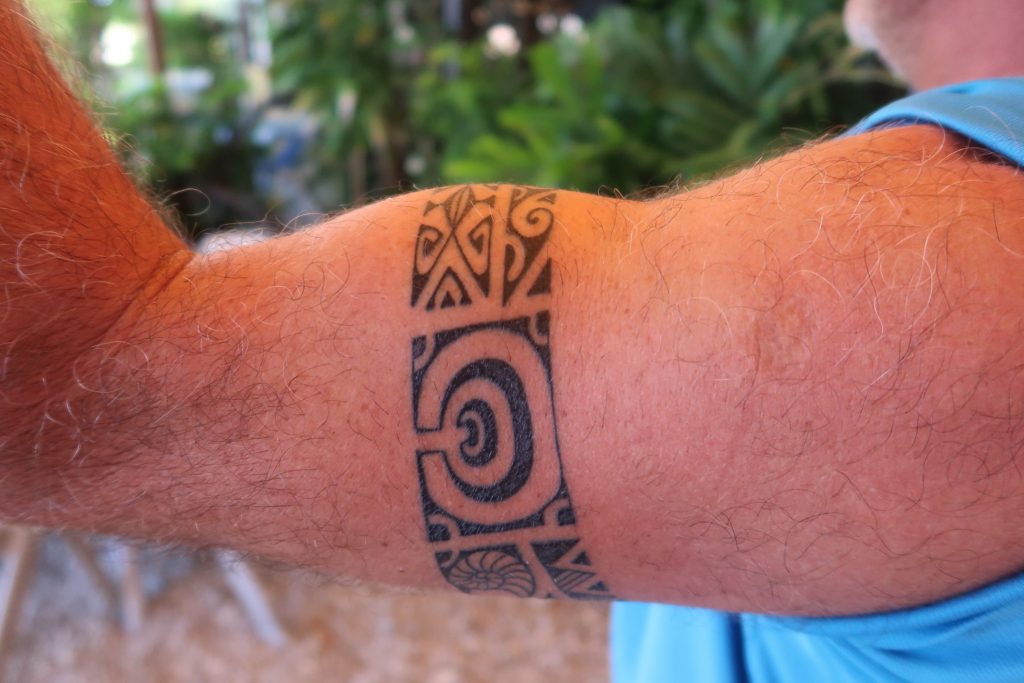
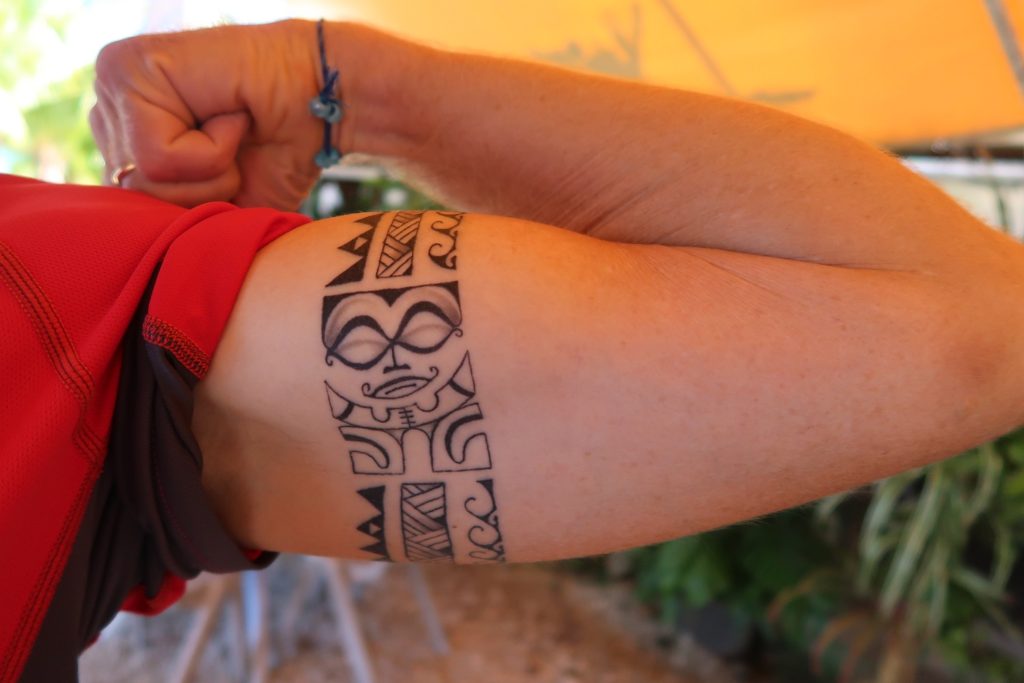
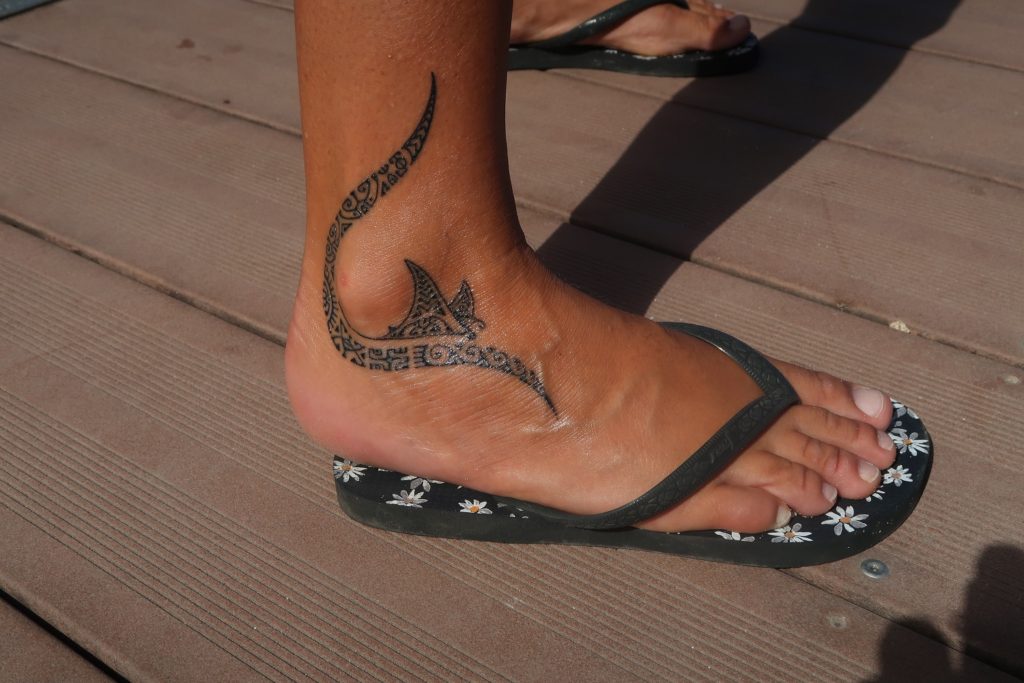
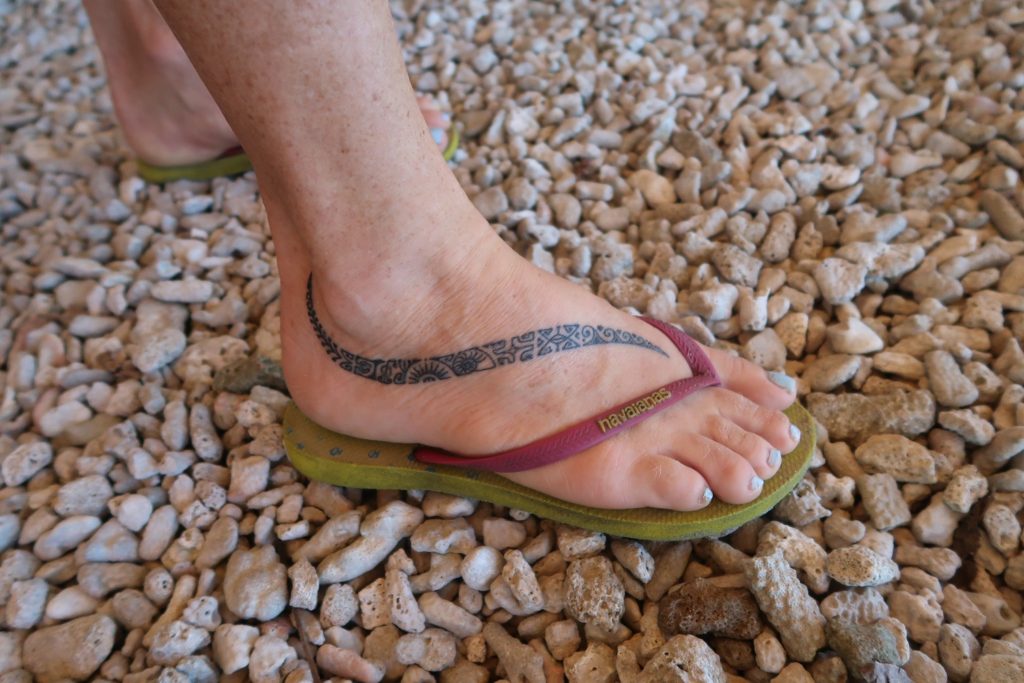
2 Comments
Liz Billington
August 7, 2017 - 11:43 amWhat gorgeousness! Liz
annie
August 9, 2017 - 1:56 amHi Liz… more gorgeousness to come! it is wonderful here xxxx